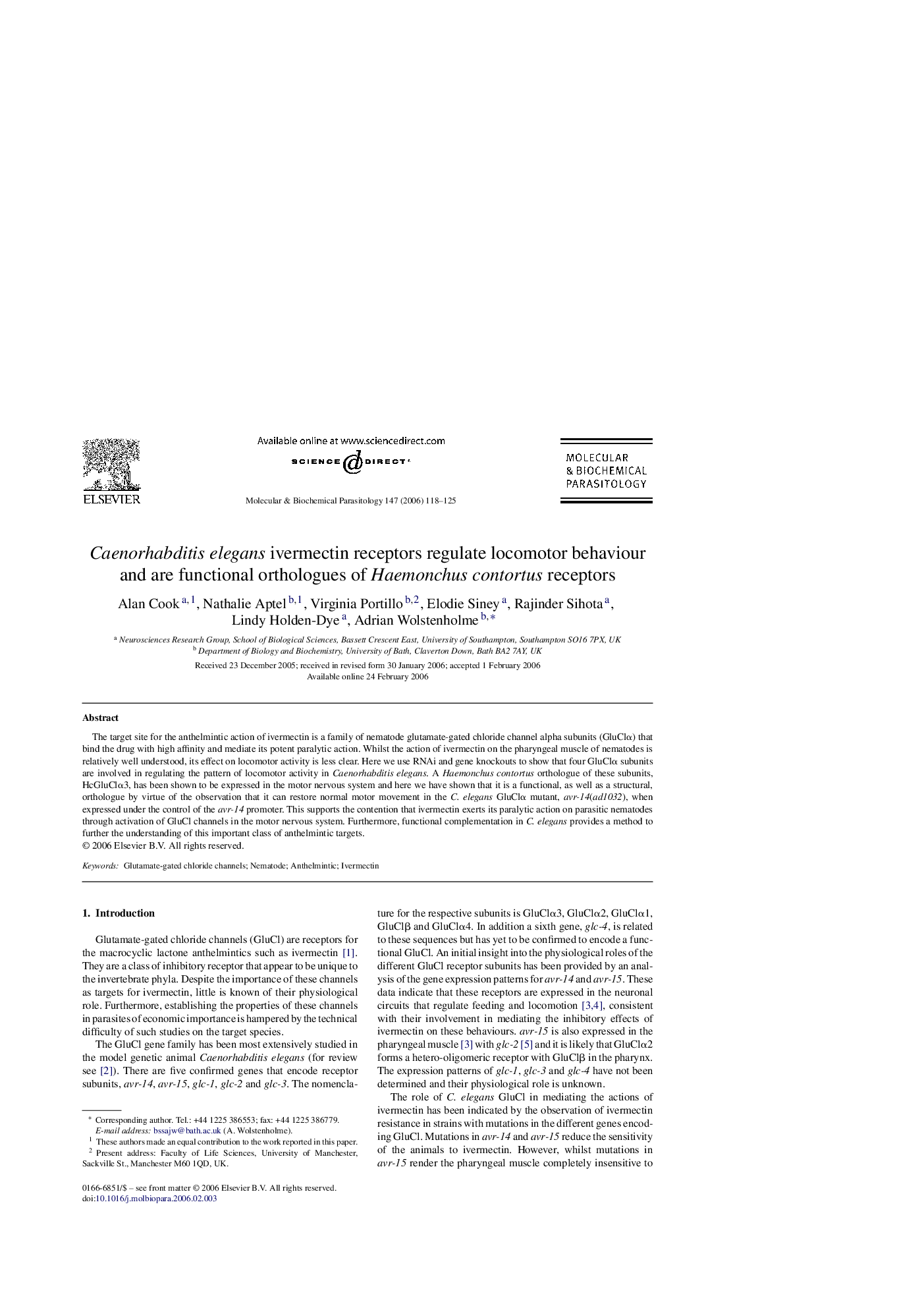| Article ID | Journal | Published Year | Pages | File Type |
|---|---|---|---|---|
| 2830470 | Molecular and Biochemical Parasitology | 2006 | 8 Pages |
The target site for the anthelmintic action of ivermectin is a family of nematode glutamate-gated chloride channel alpha subunits (GluClα) that bind the drug with high affinity and mediate its potent paralytic action. Whilst the action of ivermectin on the pharyngeal muscle of nematodes is relatively well understood, its effect on locomotor activity is less clear. Here we use RNAi and gene knockouts to show that four GluClα subunits are involved in regulating the pattern of locomotor activity in Caenorhabditis elegans. A Haemonchus contortus orthologue of these subunits, HcGluClα3, has been shown to be expressed in the motor nervous system and here we have shown that it is a functional, as well as a structural, orthologue by virtue of the observation that it can restore normal motor movement in the C. elegans GluClα mutant, avr-14(ad1032), when expressed under the control of the avr-14 promoter. This supports the contention that ivermectin exerts its paralytic action on parasitic nematodes through activation of GluCl channels in the motor nervous system. Furthermore, functional complementation in C. elegans provides a method to further the understanding of this important class of anthelmintic targets.
